15 May / Five More to Go: Kim Hyun Sook’s Banned Book Club [in The Booklist Reader]

 Banned Book Club by Kim Hyun Sook with Ryan Estrada, illustrated by Ko Hyung-Ju
Banned Book Club by Kim Hyun Sook with Ryan Estrada, illustrated by Ko Hyung-Ju
Busan-based wife-and-husband team Kim and Estrada mine Kim’s young adult experiences to expose a chilling period of Korean history so antithetical to the globally addictive entertainment of K-dramas and K-pop currently synonymous with South Korea. In 1983, Hyun Sook is a college freshman, determined to get the education her mother resents but her father, thankfully, supports. Her campus arrival is met with a student riot in progress calling for the dismissal of President Chun Doo-hwan over his totalitarian dictatorship. Hyun Sook remains determined to keep her head down, study, and “stay out of politics!” As an English literature major, she’s thrilled to be invited to a book club, but what she enters is anything but a cozy circle of tea-sipping groupies. Despite lingering reluctance, Hyun Sook’s quest for truth and understanding is on. In recreating such difficult history, artist Ko finds a remarkable balance of humor and bleakness, of youthful tenacity and growing cynicism, as she captures Kim’s activist-as-a-young-student journey with an affecting resonance sure to inspire today’s youthful generation of tenacious changemakers.
Throughout the world, young people have been vital throughout history in instigating, demanding, creating change. Check out this global phenomenon through these five notable graphic titles.
 Anne Frank: The Anne Frank House Authorized Graphic Biography by Sid Jacobson and Ernie Colón
Anne Frank: The Anne Frank House Authorized Graphic Biography by Sid Jacobson and Ernie Colón
Her diary, originally published in 1947, made the teenage Anne immortal; with official approval clearly marked on the cover, this title from comic veterans Jacobson and Colón gives Anne’s brief life the graphic treatment. Interwoven with Anne’s familiar story are glimpses of her extended family’s experiences, as well as important historical ‘snapshots’ that further underscore the enormity of the Holocaust tragedy. The last chapter, aptly titled “The Story Lives On,” follows Anne’s legacy beyond her cruel death, while the book’s final pages offer a detailed, color-coded chronology from 1925 (the year Anne’s parents married) to her father Otto’s passing in 1980, followed by “Suggestions for Further Reading.” The resulting enlightening package is an ideal introduction to Anne’s courage, especially for reluctant readers; that said, this remains a difficult, challenging read as the cruelty and violence within are never elided.
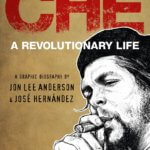 Che: A Revolutionary Life | A Graphic Biography by Jon Lee Anderson and illustrated by José Hernández
Che: A Revolutionary Life | A Graphic Biography by Jon Lee Anderson and illustrated by José Hernández
Anderson’s Che: A Revolutionary Life (1997) gets superbly realized in graphic form by Mexican artist Hernández, who distills Anderson’s lauded, 812-page original into just over 400 pages of spectacularly illustrated narrative. Since his 1967 death at 39, Che “has become the most recognized human image in the world,” Anderson writes, fueled by Alberto Korda’s iconic photograph. Between Che’s “crassly commercial” ubiquity and his “authentically mythological” cult status, Anderson attempts to “convey … who Che had really been in life.” Targeting “a generation more used to expressing resistance with a click on their iPhones than taking to the streets,” author and artist deftly balance Che’s revolutionary idealism with his failures in leadership, his arrogance, his familial inadequacies.
 Cuba: My Revolution by Inverna Lockpez, illustrated by Dean Haspiel, and colored by José Villarrubia
Cuba: My Revolution by Inverna Lockpez, illustrated by Dean Haspiel, and colored by José Villarrubia
In 1959, 17-year-old Sonya remains hopeful despite the violent chaos that threatens her home city of Havana. She commits to the coming revolution by postponing her artistic dreams to become a doctor. Over the next seven years, as Castro seizes power, she survives a tortuous journey – physical, intellectual, emotional – from dedication to disillusionment. Based on her own memories, Lockpez’s book mourns lives lost, society betrayed, history erased, but celebrates Cuban resistance and resilience.
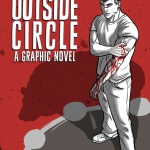 The Outside Circle by Patti LaBoucane-Benson and illustrated by Kelly Mellings
The Outside Circle by Patti LaBoucane-Benson and illustrated by Kelly Mellings
“The way our communities were set up was like a circle,” an Elder explains to a group of imprisoned men. “In the middle of that circle were children. Around those children were the Elders, who would teach them. Around the Elders were the women. Keeping the home fires burning, for us all. And we were the outside circle – the safety of everyone. We were warriors.” But among the Aboriginal community in Alberta, Canada, that circle is devastatingly broken because of inequitable laws, racism, and social systems. Insisting on not assigning blame, the Elders push the newest generations to break the crushing cycles of abuse, poverty, crime, drugs, and escape violent death. Beyond the facts, LaBoucane-Benson and Mellings’ sensitive, careful presentation reveals a narrative that must be told, acknowledged, remembered, confronted, fixed.
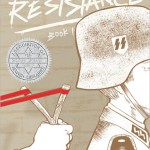
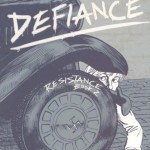
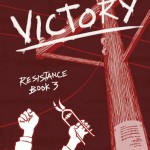 Resistance; Defiance; and Victory by Carla Jablonski, illustrated by Leland Purvis, color by Hilary Sycamore
Resistance; Defiance; and Victory by Carla Jablonski, illustrated by Leland Purvis, color by Hilary Sycamore
Jablonski and Puvis’ graphic tri-volume follows brave, headstrong kids who decide they can and must make a difference in a war they don’t understand. The series opens in 1942 when most of France is occupied by the Nazi German army. The three Tessier children long for news of their missing father. Their closest friend, Henri Levy, is Jewish, which puts him in grave danger. While the Tessiers remains loyal to the Levys, the rest of the nervous village can no longer be trusted. When the Nazis arrive, the Levy parents suddenly disappear. The Tessier children will help their friend Henri at all costs … and find unexpected, necessary assistance with the local Resistance supporters. The children are clearly the heroes here, making the message crystal clear: fighting for justice has no age limits.
Published: “Five More to Go: Kim Hyun Sook’s BANNED BOOK CLUB,” The Booklist Reader, May 15, 2020
